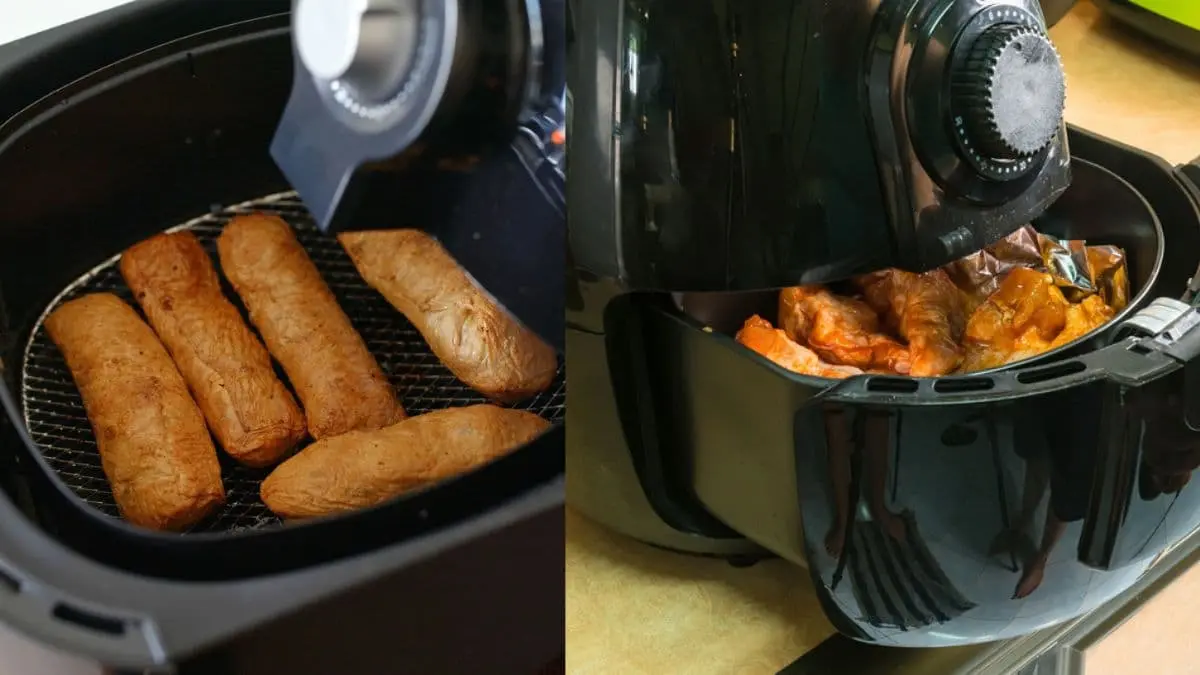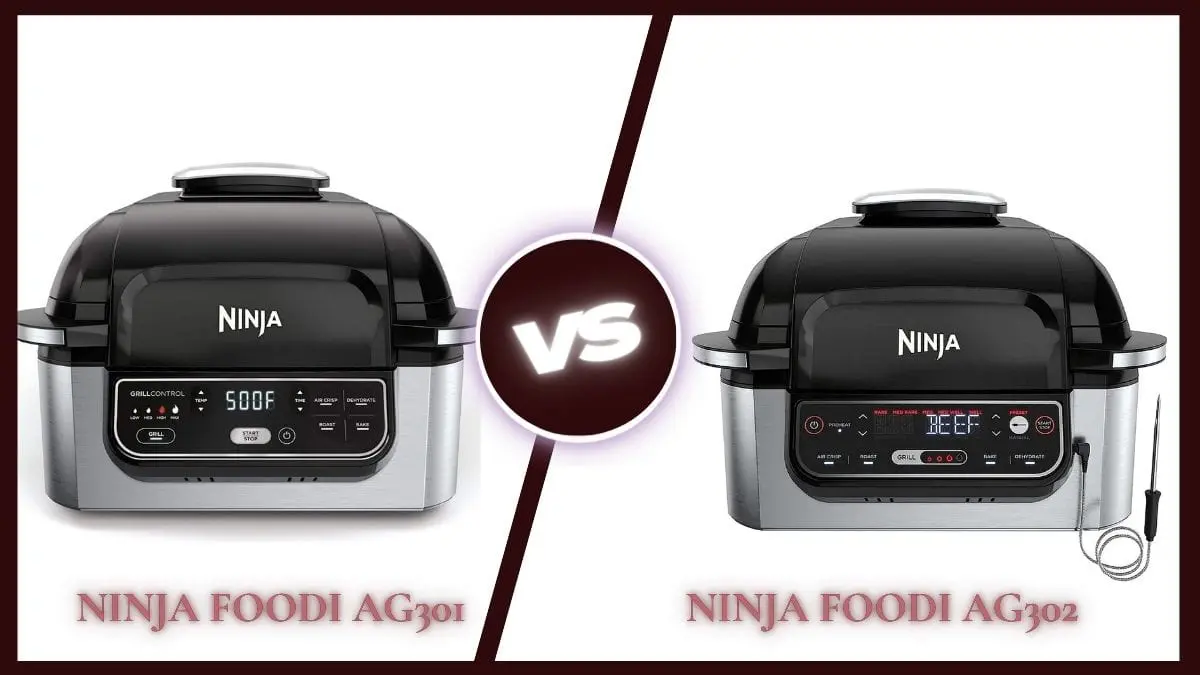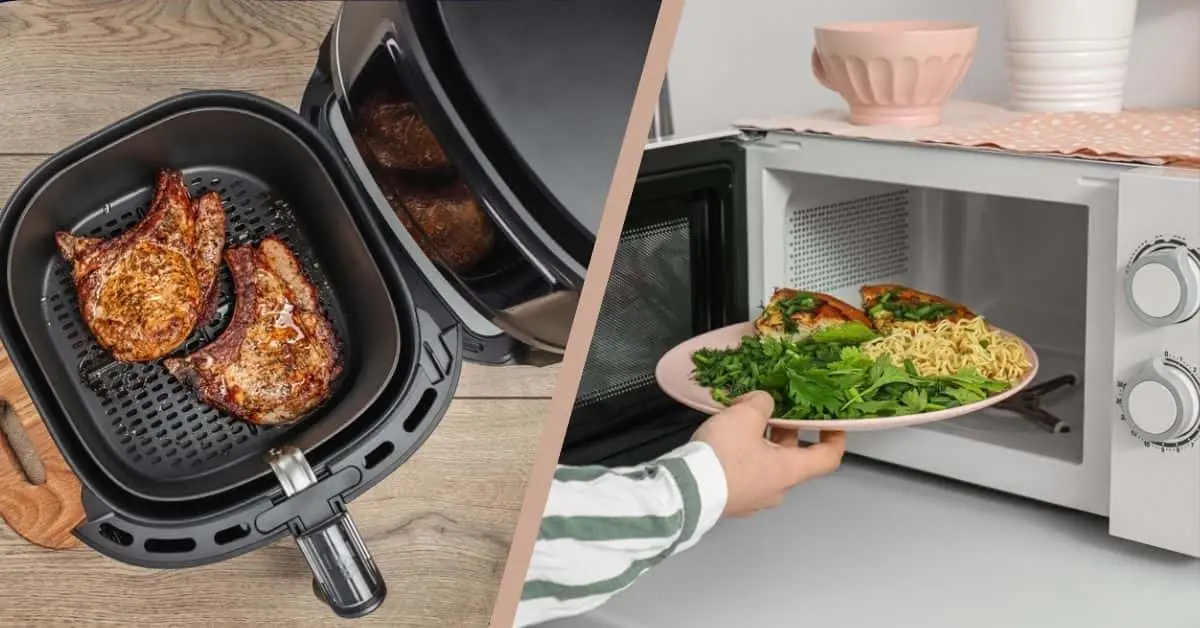Air fryers have taken over kitchens everywhere, promising crispy, delicious food with little to no oil. But if you’re new to air frying, you might be wondering—do you have to use oil in an air fryer?
The short answer? No, you don’t have to. But in some cases, a little oil can make a big difference. While air fryers use hot air to cook food, a small amount of oil can help improve crispiness, prevent dryness, and add flavor. The key is knowing when to use it and how much to add.
In this guide, we’ll break down exactly when oil is necessary, what foods need it (and which don’t), the best oils to use, and tips for getting the best results—whether you prefer to cook with or without oil.
How Air Fryers Work (Understanding the Cooking Process)
Air fryers aren’t deep fryers, but they can still deliver that crispy, golden texture we all love. The secret? Rapid air circulation.
The Science Behind Air Frying
At its core, an air fryer is like a small, high-powered convection oven. It uses a heating element and a fan to circulate hot air around your food at high speed. This rapid movement of hot air cooks food evenly and creates a crispy outer layer, similar to deep frying—but without submerging your food in oil.
Here’s how the process works step by step:
- Heating Element Warms Up the Air – Once you set the temperature, the air fryer’s heating element (usually located at the top) starts generating heat.
- Fan Circulates the Hot Air – A powerful fan blows the hot air around, ensuring that food cooks from all sides.
- Maillard Reaction Creates Crispiness – When heat interacts with the surface of your food, it triggers the Maillard reaction—the chemical process that gives fried foods their crispy texture and golden-brown color.
- Fat and Moisture Play a Role – If the food contains natural fats (like chicken wings or bacon), these fats render during cooking, helping with crispiness. If there’s no fat, a small amount of oil can help create that crunchy texture.
How Does This Compare to Deep Frying?
| Feature | Air Fryer | Deep Fryer |
| Cooking Method | Rapid hot air circulation | Submerging food in hot oil |
| Oil Usage | Minimal or none | Large amounts required |
| Crispiness | Can be crispy, but lighter | Extra crispy, deep-fried texture |
| Calories | Lower, since less oil is absorbed | Higher, due to oil absorption |
| Cleanup | Easy, little to no grease | Messy, requires oil disposal |
Air frying is a healthier alternative to deep frying because it uses significantly less oil while still delivering satisfying results. However, for some foods, using a small amount of oil can improve texture—especially for things like frozen fries, breaded chicken, or roasted vegetables.
Check out our detailed comparison of air fryers vs. deep fryers to see the key differences and find out which suits your cooking style best.
Does an Air Fryer Actually “Fry” Food?
Not exactly. Traditional frying involves cooking food in hot oil, which fully surrounds and penetrates the food, creating that signature crunch. Air frying, on the other hand, relies on hot air and surface heat to crisp up the outside.
So, while an air fryer won’t perfectly replicate the deep-fried crunch of, say, fast-food fries or battered fish, it gets pretty close—and with far less oil and mess.
Do You Have to Use Oil in an Air Fryer?
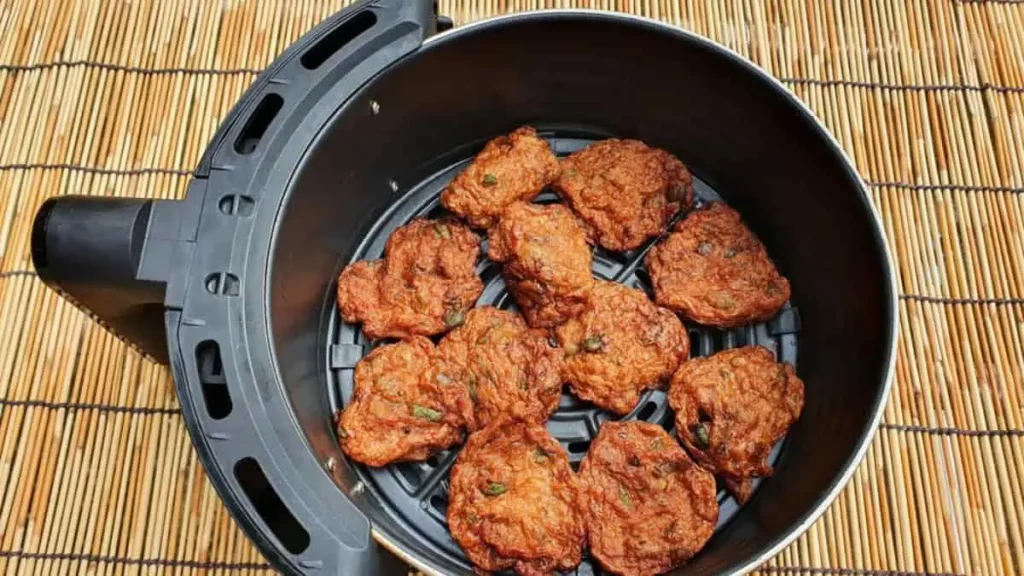
The short answer: No, you don’t have to use oil in an air fryer—but sometimes, it helps.
Air fryers work by circulating hot air around food, so you can cook many things without a drop of oil. However, a little oil can improve crispiness, texture, and flavor, especially for certain foods. Whether you use oil or not depends on what you’re cooking and the results you want.
Can You Air Fry Without Oil?
Absolutely. Many foods turn out great in an air fryer without any oil at all. If you’re reheating leftovers, cooking frozen foods with pre-applied oil, or making naturally fatty items like bacon or sausages, you can skip the oil entirely.
However, if you’re trying to crisp up fresh vegetables, raw meats, or breaded foods, a light coating of oil can make a big difference in achieving that golden-brown, crispy finish.
How Does Oil Affect Air Frying?
Oil serves a few important purposes in an air fryer:
- Enhances Crispiness – A thin layer of oil helps food brown evenly and develop a crispy crust.
- Prevents Dryness – Some foods (like chicken breasts or roasted veggies) can dry out without oil. A small amount helps retain moisture.
- Adds Flavor – A drizzle of olive oil or avocado oil can enhance taste, especially for roasted or grilled-style foods.
- Reduces Sticking – While most air fryer baskets are non-stick, some foods (like fresh meats or battered foods) can still stick. A bit of oil prevents this.
What Happens If You Don’t Use Oil?
- Certain foods may be drier or less crispy. Think of roasted potatoes or homemade fries—they might turn out more dehydrated without oil.
- Some coatings won’t crisp up. If you’re air frying breaded chicken or fish, the coating may not get that perfect crunch without oil.
- Food may not brown as well. Oil helps with caramelization, which is why oil-free foods sometimes look a bit pale.
That said, if you’re looking for an ultra-healthy option, you can definitely cook without oil. Just be prepared for slightly different results.
When Should You Use Oil in an Air Fryer?
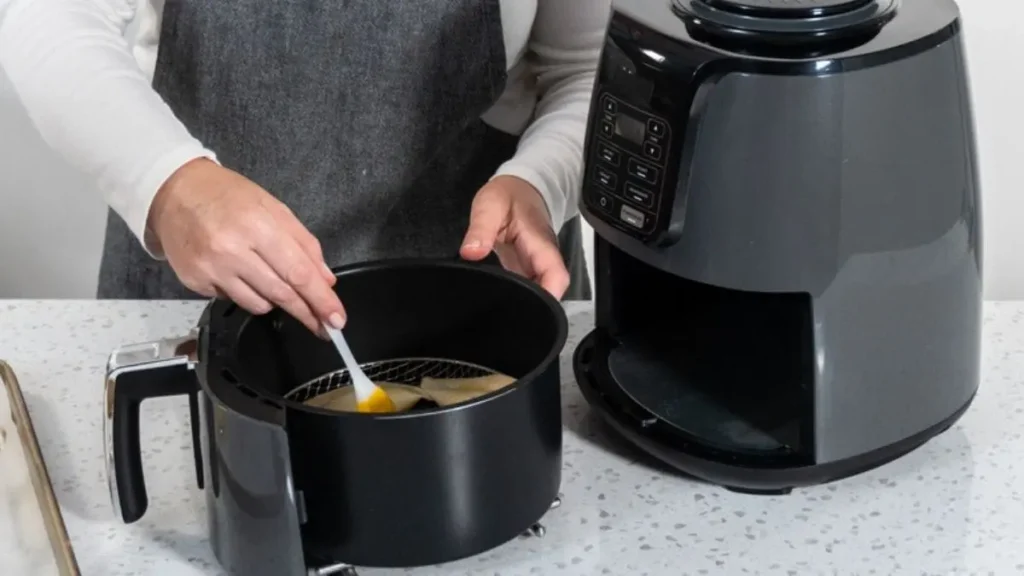
Using oil in an air fryer isn’t always necessary, but in some cases, it can make a big difference. The key is knowing when to use it and how much to apply. Some foods benefit from a small amount of oil for better crispiness and flavor, while others cook perfectly fine without it.
Foods That Benefit from a Small Amount of Oil
If you want that deep-fried texture without the deep fryer, a little oil can go a long way. Certain foods just turn out better when lightly coated with oil before air frying.
Take potatoes, for example. Whether you’re making fries, hash browns, or roasted potatoes, a thin layer of oil helps them crisp up beautifully. Without it, they may turn out dry or slightly leathery. The same goes for vegetables like Brussels sprouts, carrots, and zucchini—oil helps with browning and prevents a dehydrated texture.
Breaded foods, like chicken tenders or fish fillets, also benefit from oil. A quick spray or brush of oil on the breading ensures an even, golden crust. Otherwise, the coating may stay powdery or dry. The same is true for homemade mozzarella sticks or onion rings—without oil, the coating won’t crisp up properly.
Even frozen foods like store-bought French fries, chicken nuggets, and egg rolls often come pre-coated with oil, but adding a little extra can enhance their crunch and prevent them from turning out overly dry.
For meats, oil isn’t always necessary, but it can help with searing and locking in moisture. Skin-on chicken thighs, for instance, crisp up better when lightly brushed with oil. Leaner cuts, like boneless chicken breasts, also benefit from oil to prevent dryness.
Foods That Don’t Require Oil at All
On the other hand, some foods already contain enough natural fats or moisture to cook perfectly in an air fryer without any additional oil.
Take bacon, for example. It releases its own fat as it cooks, meaning extra oil isn’t needed. The same goes for sausages, burgers, and even fattier cuts of steak. As the fat renders, it crisps up naturally.
Frozen foods with pre-applied oil, like frozen fries, tater tots, and spring rolls, also don’t need extra oil. Adding more might make them overly greasy. Most prepackaged frozen foods are designed to crisp up as they are.
When it comes to baked goods, oil is rarely needed. Muffins, cakes, and cookies bake well in an air fryer without additional oil because they rely on internal moisture and fats from butter or eggs. Adding oil in these cases could make them too greasy.
Even vegetables that contain high water content, like mushrooms, bell peppers, and tomatoes, don’t necessarily need oil. These foods soften naturally and don’t require extra fat to help them cook properly.
Knowing when to use oil in an air fryer comes down to understanding the texture you want. If you’re after a crispy, golden finish, oil helps. But if the food already has natural fats or moisture, you can often skip it without affecting the results.
Best Oils to Use in an Air Fryer (And What to Avoid)
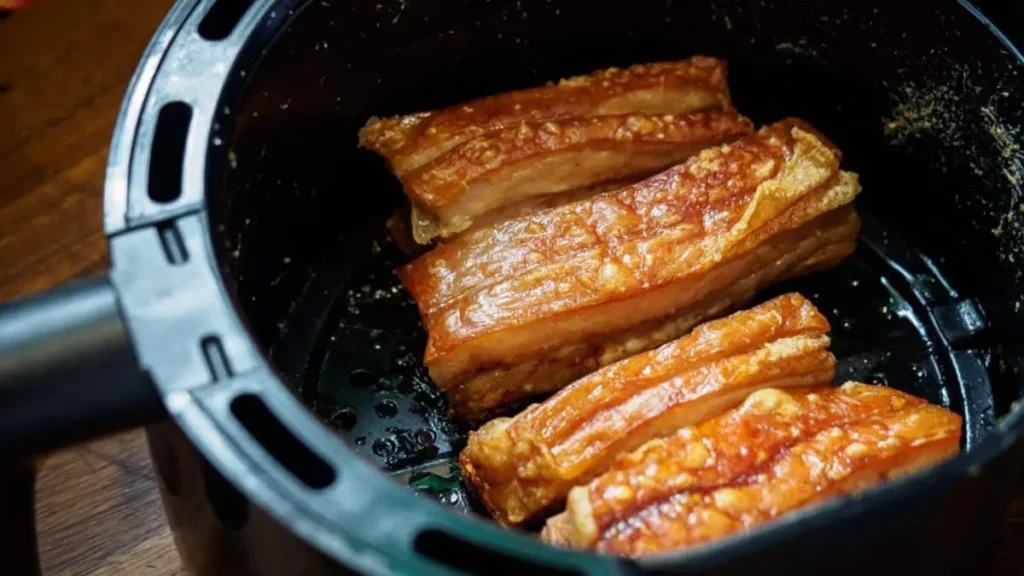
Not all oils are created equal—especially when it comes to air frying. Since air fryers cook food at high temperatures, choosing the right oil can make a big difference in flavor, texture, and even safety. Some oils hold up well to heat, while others break down, burn, or create unwanted smoke.
What Makes an Oil Good for Air Frying?
The most important factor when choosing an oil for air frying is its smoke point—the temperature at which the oil starts to break down and produce smoke. Since most air fryers operate between 350°F and 450°F, you’ll want an oil with a smoke point above 400°F to avoid burning or a smoky kitchen.
Additionally, neutral-flavored oils tend to work best for air frying. While some oils, like extra virgin olive oil, have strong flavors that can enhance certain dishes, neutral oils offer versatility for a wide range of recipes.
Best Oils for Air Frying
These oils have high smoke points and work well for air frying:
- Avocado Oil (520°F smoke point) – One of the best options for air frying. It has a high smoke point, a mild flavor, and is packed with heart-healthy fats.
- Refined Olive Oil (465°F smoke point) – While extra virgin olive oil burns at lower temperatures, refined olive oil is better suited for air frying. It adds a light Mediterranean flavor.
- Grapeseed Oil (420°F smoke point) – A great all-purpose oil that’s neutral in taste and works well for crispy foods.
- Canola Oil (400°F smoke point) – A budget-friendly option that’s commonly used for air frying. It’s neutral in flavor and widely available.
- Peanut Oil (450°F smoke point) – Ideal for frying due to its high smoke point and mild, slightly nutty flavor. Great for crispy foods like fries or wings.
- Sunflower Oil (440°F smoke point) – Another neutral-tasting oil with a high smoke point, making it a good option for air frying.
Oils to Avoid in an Air Fryer
Some oils aren’t suitable for air frying because they have low smoke points, meaning they burn at high temperatures. Others contain additives that can damage your air fryer over time.
- Butter (300°F smoke point) – While great for flavor, butter burns quickly in high heat and isn’t ideal for air frying. If you want a buttery taste, brush melted butter on food after cooking.
- Coconut Oil (350°F smoke point) – Virgin coconut oil burns easily in an air fryer. If you must use coconut oil, go for refined coconut oil, which has a slightly higher smoke point (400°F).
- Extra Virgin Olive Oil (375°F smoke point) – While healthy, extra virgin olive oil has a lower smoke point than refined olive oil and can burn at high temperatures.
- Sesame Oil (350-410°F smoke point) – While toasted sesame oil adds great flavor, it’s best used as a finishing oil rather than for air frying.
- Vegetable Shortening (360°F smoke point) – Not suitable for air frying due to its low smoke point and high saturated fat content.
- Spray Oils (Like PAM or Generic Aerosol Sprays) – Many aerosol cooking sprays contain additives and propellants that can damage the non-stick coating of your air fryer basket over time. Instead, use a refillable oil sprayer with pure oil.
How to Use Oil in an Air Fryer for the Best Results
Applying oil correctly in an air fryer is just as important as choosing the right one. Instead of pouring oil directly into the basket, coat your food lightly to prevent excess oil buildup. A spray bottle or pastry brush works best to ensure an even layer.
If you’re air frying something that naturally releases fat, like bacon or fatty meats, you can skip the oil altogether. For drier foods like vegetables, chicken breasts, or breaded items, a thin layer of oil will improve crispiness without making them greasy.
Tips for Cooking Without Oil in an Air Fryer
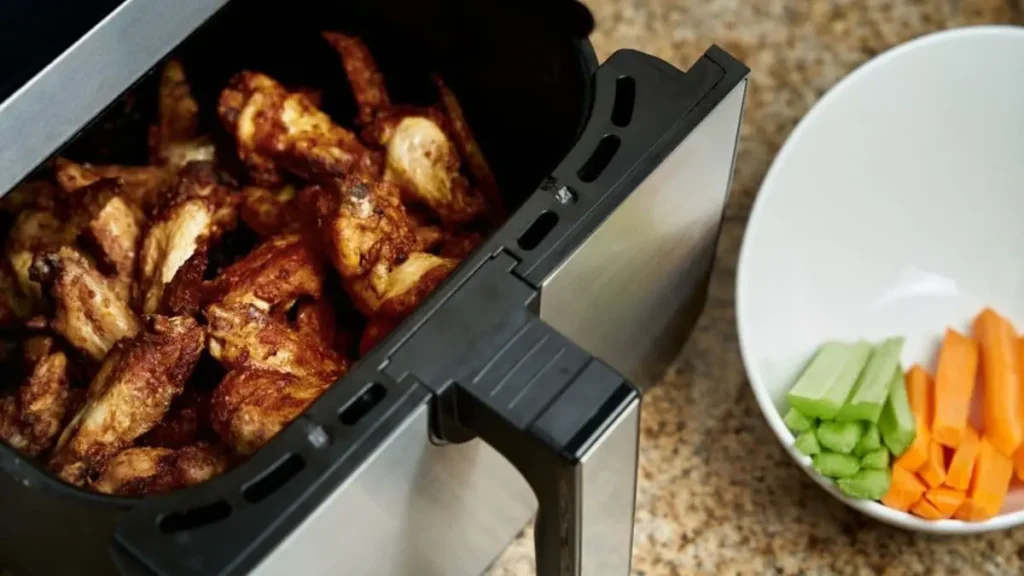
If you’re looking to cut back on oil or avoid it altogether, air frying is one of the best cooking methods to achieve crispy, delicious results without excess fat. While oil helps with browning and texture, there are several ways to get great results without it. The key is using the right techniques, choosing the right foods, and making small adjustments to prevent drying out or sticking.
Choose the Right Foods
Some foods naturally crisp up well without oil, while others may need a little help. Foods with higher moisture content—such as mushrooms, bell peppers, or fish—cook well without added oil because they release their own juices during cooking. Meanwhile, foods with natural fats, like chicken thighs, salmon, or beef, render their own fat, eliminating the need for extra oil.
If you’re cooking dry or starchy foods like potatoes, breaded items, or lean meats, you’ll need alternative methods to help achieve crispiness.
Use the Right Cooking Temperature
Temperature plays a big role when air frying without oil. If the heat is too low, food may dry out before it crisps up. If it’s too high, it might brown too quickly without cooking through.
- For vegetables: 375°F to 400°F is ideal for roasting without oil.
- For lean meats (chicken breast, turkey): 370°F to 400°F helps retain moisture.
- For frozen foods: Follow package recommendations, but a range of 380°F to 400°F works best.
Preheat Your Air Fryer
Preheating your air fryer before cooking can make a big difference. When you start with a hot air fryer, food begins cooking immediately, helping it crisp up better—especially if you’re not using oil. Most air fryers take about 3-5 minutes to preheat properly.
Don’t Overcrowd the Basket
Without oil, air circulation becomes even more important. If food is packed too tightly in the basket, it won’t crisp up properly. Instead of frying, it may steam and turn out soft. To avoid this:
- Arrange food in a single layer with space between pieces.
- If cooking a large batch, cook in multiple batches for the best results.
- Shake the basket or flip food halfway through to ensure even cooking.
Use a Non-Stick Liner or Parchment Paper
Since oil prevents food from sticking, you may notice more sticking when cooking oil-free. Using an air fryer liner or perforated parchment paper can prevent food from clinging to the basket. Be sure to use air fryer-safe parchment with holes to maintain proper airflow.
If you don’t have a liner, lightly rubbing the basket with water or broth before cooking can also help reduce sticking.
Coat with Natural Alternatives
If you’re skipping oil, you can still enhance browning and crispiness with natural substitutes. Try coating food with:
- Vegetable broth or lemon juice – Adds moisture while helping seasonings stick.
- Egg wash – Helps breadcrumbs and coatings adhere without oil.
- Soy sauce or coconut aminos – Adds flavor and enhances browning.
- Cornstarch or arrowroot powder – Creates a crispy coating, especially for tofu or vegetables.
For roasted vegetables, tossing them in a little vegetable broth and seasoning before air frying can mimic the effect of oil without adding fat.
Increase Cooking Time Slightly
Since oil helps with heat distribution, cooking without it may require a slightly longer cook time to achieve the same crispiness. If your food isn’t browning as expected, try increasing the cooking time by 2-5 minutes, checking frequently to prevent overcooking.
Use High-Quality Seasonings
Cooking without oil means relying on seasonings for flavor. Since oil helps spices stick, without it, seasonings can sometimes fall off. To fix this:
- Apply seasonings after lightly coating food with a liquid alternative like lemon juice or broth.
- Consider marinating food before air frying to help flavors absorb better.
- Use dry rubs for meats and vegetables to boost taste without needing oil.
Common Myths About Using Oil in an Air Fryer
Air fryers have taken over kitchens worldwide, but with their rise in popularity comes a lot of confusion—especially about using oil. Some people think you should never use oil, while others believe you must use it just like a deep fryer. Let’s clear up some of the most common myths about oil and air frying.
Myth #1: Air Fryers Don’t Need Any Oil at All
While it’s true that air fryers can cook without oil, that doesn’t mean you should always skip it. Some foods, like fresh vegetables or breaded items, benefit from a light coating of oil to enhance crispiness and prevent drying out. The key is using oil in moderation—far less than you’d use for deep frying but just enough to get the best texture and flavor.
Myth #2: You Can Use Any Kind of Oil in an Air Fryer
Not all oils are created equal. Since air fryers cook at high temperatures, you need oils with a high smoke point (like avocado, canola, or refined olive oil). Using oils with low smoke points, such as extra virgin olive oil or butter, can lead to burning, smoking, and an unpleasant taste. Choosing the right oil makes a big difference in both safety and flavor.
Myth #3: Spraying Oil Directly in the Air Fryer Damages It
This is only partially true. Aerosol cooking sprays (like PAM) contain propellants and additives that can damage the non-stick coating of your air fryer basket over time. However, using a refillable oil sprayer with pure oil is perfectly safe and actually recommended for even distribution.
Myth #4: You Can’t Get Crispy Food Without Oil
Oil helps with crispiness, but it’s not the only way to achieve it. Proper cooking techniques—like preheating the air fryer, not overcrowding the basket, shaking or flipping food halfway through, and using dry coatings like cornstarch or breadcrumbs—can help you get crispy results without extra oil.
Myth #5: You Should Add Oil to the Air Fryer Basket Instead of the Food
Some people assume they should pour oil directly into the air fryer basket, but this is a mistake. Unlike deep frying, where food is submerged in oil, air frying works best when oil is applied directly to the food. This ensures even coating and prevents unnecessary oil buildup at the bottom of the basket.
FAQs About Using Oil in an Air Fryer
Still have questions about using oil in an air fryer? Here are some of the most common questions answered in a clear, concise way.
Do you need to use oil in an air fryer?
No, oil is not required for air frying, but it can enhance crispiness and prevent food from drying out. Some foods, like breaded items, fresh vegetables, and lean meats, benefit from a light coating of oil, while others, like fatty meats or frozen foods, cook fine without it.
How much oil should I use in an air fryer?
A little goes a long way—usually ½ to 1 tablespoon for most foods. If using a spray bottle, a few spritzes are enough to coat the surface evenly. Adding too much oil can make food greasy and may even cause smoking.
Can I use cooking spray in an air fryer?
Avoid aerosol sprays like PAM, as they contain additives that can damage the non-stick coating of your air fryer basket. Instead, use a refillable oil sprayer with pure oil for even application.
Do frozen foods need extra oil in an air fryer?
Most frozen foods, like fries, nuggets, and spring rolls, already contain oil from processing, so additional oil isn’t necessary. However, adding a small amount can help improve crispiness if desired.
Can I put oil in the air fryer basket instead of on the food?
No, oil should be applied directly to the food, not poured into the basket. Unlike deep frying, where food is submerged in oil, air frying relies on hot air circulation. Applying oil to food ensures an even coating and prevents excess oil buildup.
Conclusion
So, do you have to use oil in an air fryer? Not at all—but in many cases, a little bit can make a big difference. While air fryers are designed to cook with hot air rather than submerging food in oil, using a small amount can help improve crispiness, enhance flavor, and prevent certain foods from drying out. The key is knowing when to use oil, which oils to choose, and how to apply it correctly.
If you prefer to cook without oil, you still have plenty of options! Choosing the right foods, adjusting cooking techniques, and using natural alternatives like broth or cornstarch can help you achieve crispy, delicious results—no oil needed.
Ultimately, air frying gives you flexibility. Whether you go oil-free or use just a light spray, you can enjoy healthier, flavorful meals without the extra grease of traditional frying. Experiment with different techniques, find what works best for your favorite foods, and make the most out of your air fryer!

